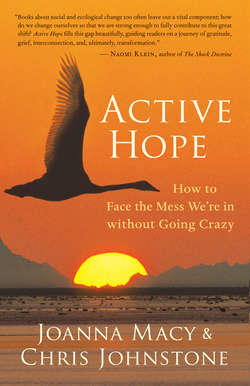Читать книгу Active Hope - Joanna Macy - Страница 22
На сайте Литреса книга снята с продажи.
Climate Change
ОглавлениеWhen more people consume more things, we not only deplete resources, but we also produce more waste. The rubbish generated each year in the United States could fill a convoy of garbage trucks long enough to go round the world six times.18 Not all our waste is so visible: each year, the average European puts out 8.1 tons of carbon dioxide; the average American more than double this.19 While this greenhouse gas is invisible, its effects are not. Climate change is no longer only a distant threat for future generations: it has arrived in measurable and destructive form.
At the time, the 1980s was the warmest decade ever recorded. The 1990s were even warmer, and the decade starting in 2000 warmer still.20 Linked to this warming, weather-related disasters (including floods, droughts, and major hurricanes) have increased dramatically: on average, three hundred events were recorded every year in the 1980s, 480 events every year in the 1990s, and 620 events every year in the decade up to 2008. In 2007 there were 874 weather-related disasters worldwide.21
As warming causes water to evaporate more quickly, land is drying out so much in some parts of the world that crops are failing and wildfires are becoming more intense. In Brazil, the droughts in 2005 were considered a once-a-century event. Yet the droughts that followed in 2010 were even worse. In Washington State, there has been more forest loss from wildfires in the last ten years than in the previous three decades combined.22
At the same time, warmer winds carry more water from the oceans, causing other areas to suffer an increase in flooding and extreme rainfall events. Ronald Neilson, a professor of bioclimatology at Oregon State University, explains: “As the planet warms, more water is getting evaporated from the oceans and all that water has to come down somewhere as precipitation.”23
In Bangladesh, fourteen inches of rain fell in a single day in 2004, contributing to floods that left 10 million homeless and much of the crop yield destroyed. The floods in Pakistan in 2010 put a fifth of the country underwater, displacing 20 million people.
Most of the world’s major cities developed as ports bordering the sea or major rivers, and more than 630 million people live less than thirty-three feet above sea level. If the ice sheets in Greenland and West Antarctica continue melting, rising water levels will flood London, New York, Miami, Mumbai, Calcutta, Sydney, Shanghai, Jakarta, Tokyo, and many other major cities.24 Melting ice is also significant because land and sea surfaces absorb more of the sun’s warmth than ice cover does. This creates a vicious cycle (see Box 1.3), in which the more the ice melts, the less it reflects the sun’s heat and the warmer it gets, leading to further ice melting.
Forests play a protective role by absorbing carbon dioxide, but as woodlands are chopped down, we lose this crucial process. Tropical trees are additionally at risk because when warmer air dries out the soil beyond a certain point, the ground can no longer support large trees. A global temperature increase of 7.2°F (4°C) could be enough to kill much of the Amazon rain forest.25 If this happened, not only would we lose the forest’s cooling effect, but the greenhouse gases released from rotting or burning trees would further add to warming, setting off another vicious cycle. The term runaway climate change is used to describe this dangerous situation, in which the consequences of warming cause more warming to occur (see Box 1.3). Professor Kevin Anderson of the Tyndall Centre for Climate Change warns of the catastrophe this could lead to:
For humanity, it’s a matter of life or death…it’s extremely unlikely that we wouldn’t have mass death at 4°C. If you have got a population of nine billion by 2050 and you hit 4°C, 5°C or 6°C, you might have half a billion people surviving.26
Box 1.3. Amplifying Loops in Runaway Climate Change
